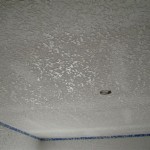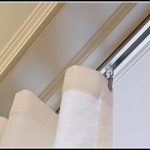1.
Water stains on the ceiling can be a frustrating problem. They can not only be unsightly but can also lead to other problems such as mold growth and structural damage. Learning how to identify and remove water stains on the ceiling can help you keep your home looking great and prevent damage.
Where Do Water Stains Come From?
Water stains on the ceiling can come from a variety of sources. Leaks from plumbing, condensation from air conditioners, and even heavy rains can all cause water stains on the ceiling. If the stain is in the middle of the ceiling, it is likely from a plumbing leak. If the stain is on the outside edge of the ceiling, it could be from condensation.
How Can You Identify a Water Stain?
Water stains can be identified by their distinct color and texture. Water stains are usually yellow or brown, and they often have a bubbled or discolored texture. If the stain is still wet, it will be darker and usually have a shiny appearance.
How Can You Remove a Water Stain?
Removing a water stain from the ceiling can be a simple process. The first step is to identify the source of the stain and make sure it has been fixed. Then, you can use a mixture of warm water and mild detergent to clean the area. If the stain is still present, use a combination of baking soda and vinegar to gently scrub away the stain. After the stain is removed, you can use a water-based primer to seal in the area and prevent further damage.
Conclusion
Water stains on the ceiling can be a nuisance and can even lead to more serious problems. Learning how to identify and remove water stains can help you keep your home looking great and prevent any further damage. By finding and fixing the source of the water and then using a combination of cleaning products, you can easily remove water stains from the ceiling.














Related Posts








